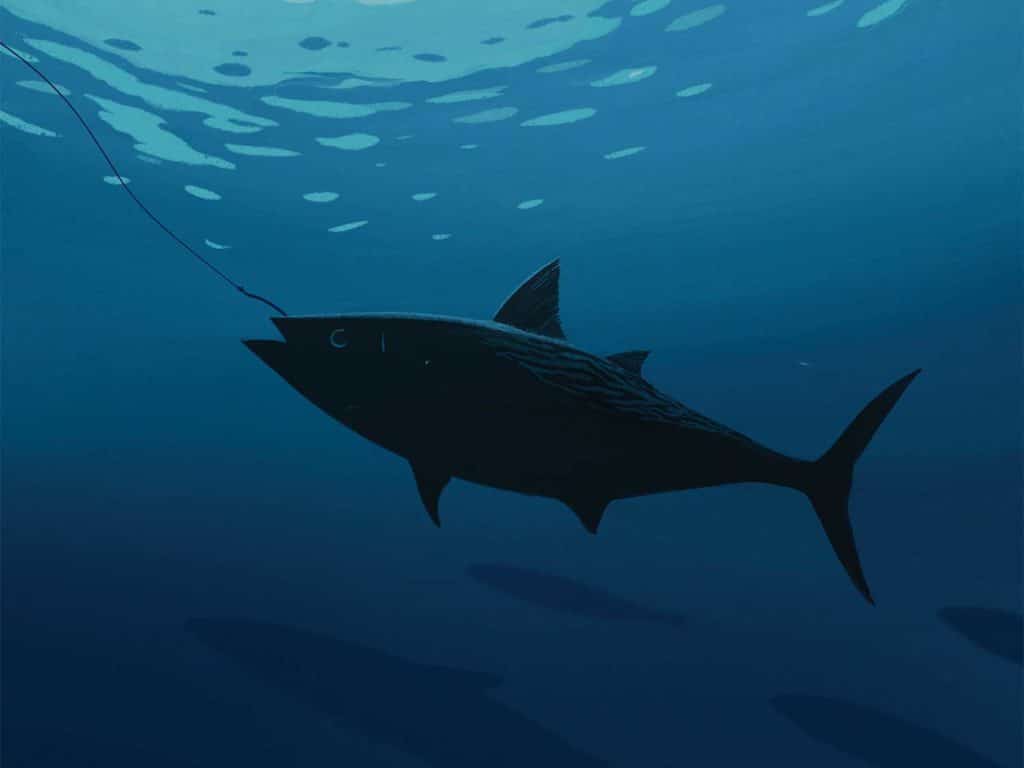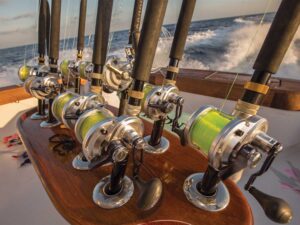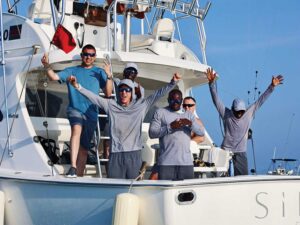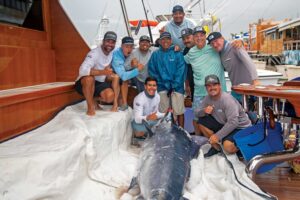
While live-baiting for sailfish off South Florida in the 1970s, I would tell my captains to not let the bonitos sink so we could get more bites. I had learned that keeping the baits at a steady speed on the surface would make them appear to be getting away from a predator, and we would get more bites from sailfish, wahoo, king mackerel, barracudas and sharks. And if you’re a charter captain, that’s the name of the game: keeping rods bent and anglers happy.
When you’re going too slow, the baits rise and fall as the captain shifts the engines in and out of gear. Not only did we not get as many bites fishing that way, but many times the fish would get into the leader, leaving us unable to hook them.
Once we started live-baiting for billfish in Venezuela, I found the same to be true. One day our boat broke down, so we chartered the boat next to us. My mate and anglers went out, and I stayed behind to handle the repairs. Around 1 p.m., they came back to the dock. When I asked what had happened, the anglers said they almost got sick and weren’t getting any bites, so they insisted I go with them the next day. We had been catching 20-plus sails and a few blue marlin a day while fishing these small live bonitos before we broke down.
Watch: Check out this sailfish swimming in a residential canal in Naples, Florida.
The next morning after reaching the bank, the captain handed me the wheel. We caught bait, and started catching sails and blues right away. We had released around 16 fish when nature called, so the captain took back the helm and I headed below. The next thing I knew, we were out of gear and in the trough, rocking like hell. Every once in a while, the captain would bump the engines in and out of gear. I realized this was why the charter party almost got sick, and also why they did not catch much the previous day. I also realized this captain didn’t catch on to how we were fishing previously compared to his method of live-baiting.
When I was fishing as a guest in Kona, Hawaii, I learned that captains could maintain a certain speed for the live baits because it was very calm and they already knew that a constant speed was good for a better presentation, which translated to more bites and a better hookup ratio. I took notes back then on the speeds they liked for each kind of bait they put out, then used that information when I fished in other locations later on in my career.
When it’s rough, it is really hard to maintain a constant speed, but I believe it is necessary. Back in the old days, we didn’t have trolling valves. The boats off Palm Beach slow-trolled goggle-eyes, and you had to put the boat in and out of gear for the slow speeds that were required to keep the baits looking good. It was tough fishing.
While these live-bait tips were designed for the Gulf of Mexico, they’ll work anywhere in the world.
I had been able to use considerably large live baits with J hooks in Australia, and had great success with our hookup ratio, but when I tried switching to circle hooks, my ratio with bigger baits and larger marlin was not very good. I am impressed by the guys fishing in the Gulf of Mexico though. They keep a variety of tunas and bonitos alive in tuna tubes, locate marlin on their sonar, and present different baits until they get a bite. The hardest part has to be getting the bait to turn around and have that circle hook lodge into the corner of the marlin’s mouth. I have heard rumors about how they do it consistently, but someday I hope to get back to the Gulf and see it for myself. I never want to stop learning and trying new ideas.







